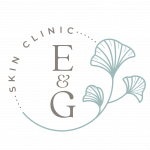At E&G Skin Clinic, we frequently see patients concerned about sudden changes in their skin, particularly when new growths appear that weren’t present before. One of the most common non-cancerous skin lesions we assess and treat is seborrheic keratosis.
Though they may look alarming, these growths are usually harmless. Still, it’s important to understand what they are, how they form, and your options for managing them, especially when they affect your confidence or comfort.
What is Seborrheic Keratosis?
Seborrheic keratosis is a benign skin growth that typically appears as a brown, black, or tan lesion with a waxy or scaly texture. Some people describe them as looking “stuck on” the skin, almost like a dab of candle wax.
These lesions can appear anywhere on the body, though they’re most common on the chest, back, face, or scalp. They often start small and gradually enlarge over time. While they may resemble warts or even skin cancers to the untrained eye, they’re typically non-cancerous and pose no health threat.
Why Do They Develop?
Seborrheic keratoses are especially common in adults over 40, though they can occur at any age. They’re not caused by viruses or infection, and they’re not contagious. Genetics seems to play a strong role—if your parents had them, you’re more likely to develop them as well.
Other contributing factors may include:
- Ageing (they’re more common with age)
- Sun exposure
- Hormonal changes
Though harmless, any new or changing skin lesion should be evaluated to rule out other conditions, especially if the appearance shifts rapidly.
When to Get It Checked
While seborrheic keratosis itself isn’t dangerous, it’s important to consult a qualified professional if:
- The lesion suddenly appears or changes
- It becomes itchy, irritated, or bleeds
- You’re unsure whether it’s benign or something more serious
At E&G Skin Clinic, our medical team can assess skin growths and determine whether treatment is necessary or simply cosmetic.
Treatment Options
Most seborrheic keratoses don’t require treatment, but you may choose to have them removed if they’re unsightly, uncomfortable, or prone to irritation from clothing or jewellery.
Common removal options include:
- Cryotherapy (freezing the lesion with liquid nitrogen)
- Curettage (scraping it off after numbing)
- Electrocautery (burning the lesion with electrical current)
- Laser therapy (for a precise, clean removal)
We’ll always tailor your treatment based on your skin type, location of the lesion, and personal preferences. We aim to achieve minimal scarring and maximum comfort.
Seborrheic keratosis may be harmless, but that doesn’t mean you have to live with it. Whether you’re looking for peace of mind or simply want smoother, clearer skin, our experienced team at E&G Skin Clinic is here to help.
If you have any concerns about a skin lesion or would like a professional assessment, get in touch today to book a consultation.
E&G Skin Clinic
Where science meets skin confidence.

